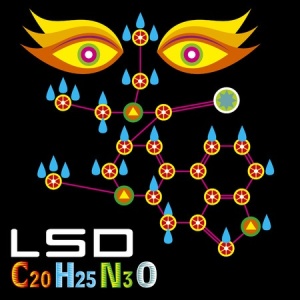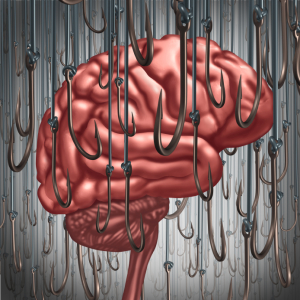Falling Down the K-Hole
Over the past few years, there has been an increased interest in using ketamine to treat depression and other psychiatric disorders, such as PTSD. It is fast acting relief for symptoms of both depression and PTSD. For depression, it is effective within two hours and was reported to help a greater proportion of individuals than traditional antidepressants. Sounds like there is tremendous potential here, right? Maybe.
A 2006 study by lead author Carlos Zarate and other researchers found that subjects receiving a single dose of ketamine “showed significant improvement in depression” within 110 minutes after injection. “Robust and rapid antidepressant effects resulted from a single intravenous dose of [ketamine]; onset occurred within 2 hours postinfusion and continued to remain significant for 1 week.” However, it was reported by Franz Vallenweider and Michael Kometer that: “all but 2 of the patients relapsed within 2 weeks after a single dose of ketamine.”
A 2011 study (and here) confirmed the alleviation of major depressive symptoms within two hours from a single, low-dose of ketamine. Its effects lasted up to two weeks. The researchers suggested that ketamine appeared to work so quickly by increasing the synthesis of BDNF, or brain-derived neurotropic factor. The increase in BDNF is caused by ketamine deactivating a chemical that normally suppresses BDNF production. “BDNF is a nerve factor that helps brain cells grow and develop new neurons.”
A 2012 study by lead author Matthew Sanjay and others reviewed the emerging literature on the potential rapid-onset antidepressant properties of ketamine. They cited data from a 2009 study that ketamine was associated with “rapid reductions in explicit and implicit suicidal cognitions within the first 24 hours.” They also noted a report from the NIMH where patients previously non-responsive to ECT (electro convulsive therapy) “showed significant improvement in depressive symptoms.”
There were acute impairment of working, episodic and semantic memory, but it did not effect the retrieval of previously learned information. The acute impairments were also temporary. There were no residual deficits found 3 days after drug administration. The Sanjay study concluded that enthusiasm for the early ketamine studies should be tempered by concerns for the validity of these studies; that the antidepressant action is short lived; and uncertainty regarding its safety with a depressed population. “Accordingly, ketamine therapy remains a highly experimental treatment approach for MDD and adoption in psychiatric practice settings at this time is premature.”
Another 2012 article, “Ketamine for Depression: Where Do We Go from Here?” said that while adverse effects had generally been mild, some patients experienced brief changes in blood pressure, heart rate, or respiration. They supported further research of ketamine to treat mood disorders. “However, given the paucity of randomized controlled trials, lack of an active placebo, limited data on long-term outcomes, and potential risks, ketamine administration is not recommended outside of the hospital setting.”
A 2013 study reported in the American Journal of Psychiatry was a randomized controlled study. Ketamine again demonstrated rapid antidepressant effects. It added further support to studies showing that NMDA receptor modulation as a potential mechanism for “accelerated improvement in severe and chronic forms of depression.” Reservations on its use in clinical practice were again expressed because of its short action and safety concerns.
Ketamine is not a new drug. It was developed in 1962 by Parke-Davis and is used as an anesthetic in human and veterinary medicine, usually in combination with another sedative drug. It has been used for several decades as a recreational drug under nicknames such as “Special K,” “K” or “Ket.” It makes users feel disassociated or disconnected from their body and can cause hallucinations. The user can feel sleepy, sluggish, confused or clumsy. They may babble, appear drunk, or have trouble remembering who they are.
It comes as a clear liquid and a white or off-white powder. It can be injected, mixed in a drink as a date-rape drug or sprinkled on tobacco or marijuana and smoked. It is virtually tasteless and causes a person to become disoriented, confused, suggestible, easily manipulated and compliant.
The victim is usually compliant, suggestible, and shows no overt resistance. As a result they can be easily led into a private setting and usually do not resist whatever is done to them. When given in a sufficient dose the victim has no memory of what happened. On the street this period of dissociated amnesia is called ‘being stuck in the K hole.’
The K-hole state can mimic catatonic schizophrenia, out-of-body experiences or near-death experiences. Since it is an anesthetic drug, ketamine could cause vomiting with its use. And “eating or drinking before taking the drug increases the risk of choking on one’s own vomit.” It is addictive, classified as a Schedule III drug by the DEA. Taken with other sedating drugs like alcohol, the effects of slowing or shutting down the central nervous system are increased. It is possible to overdose on it.
The 2014 Global Synthetic Drugs Assessment reported that ketamine is widely misused in East and South-East Asia; more than in the Americas and Europe. “Extensive ketamine use has also been reported in Brunei Darussalam, India, Myanmar and Singapore.” Between 2008 and 2011, 60% of global ketamine seizures occurred in mainland China and Hong Kong.
In “A Word to the Wise About Ketamine,” Alan Schatzberg noted that the data on ketamine as an antidepressant is still relatively limited. He said that without more data on what ketamine can do clinically, and knowing it can be a drug of abuse, “it is difficult to argue that patients should receive an acute trial of ketamine for refractory depression.” Waiting until there was greater understanding about its effects and risks was his recommendation. Although the recent studies are exciting and open up new avenues for depression research, “until we know more, clinicians should be wary about embarking on a slippery ketamine slope.”
The almost unbridled enthusiasm over the potential of ketamine to treat depression needs to be reined in. We don’t want to find ourselves “falling down the k-hole” instead of exploring ketamine’s potential to treat depression.




